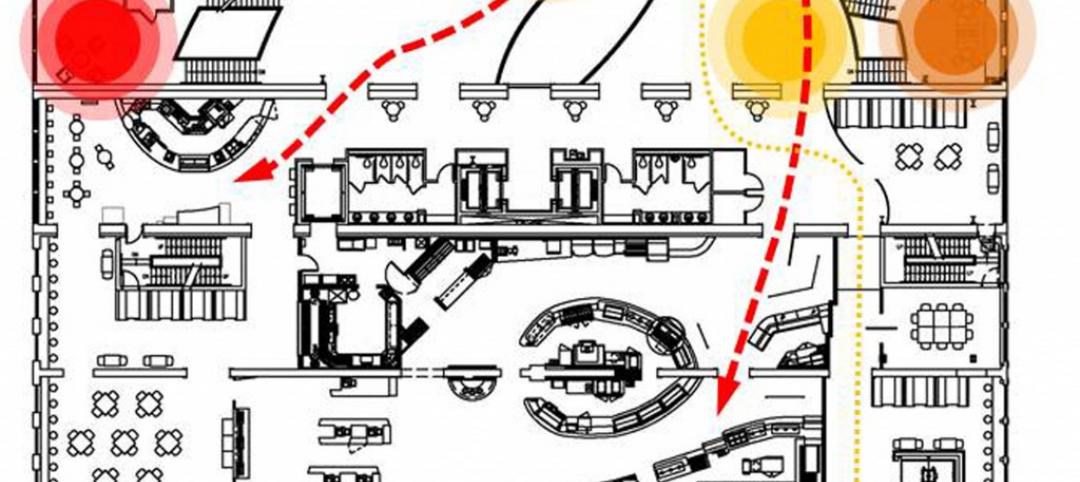Researchers from the NYU Stern School of Business and the Columbia University Graduate School of Business say the work-from-home movement will result in $500 billion of lost value in office real estate.
In a recent study, the researchers found a 32% decline in office values in 2020 and predict a 28% fall “in the longer-run.” The work-from-home shift since the pandemic has caused significant changes in lease revenues, office occupancy, lease renewal rates, lease durations, and market rents, researchers say.
Robust tools for working from home had been in place for years, but the necessities of the pandemic pushed widespread adoption of remote work. According to the researchers, office occupancy dropped from 95% in February 2020 to 10% within a month. By May 2022, it had only bounced back to 50%.
If the trend remains strong, a lot of office space might not be necessary. That would mean massive financial implications for land values and valuations in lending, nearby retail space, and tax resources for local governments.
The declines don’t fall evenly. There is “some evidence of a ‘flight to quality,’ particularly in rents,” researchers say. But rents may have yet to bottom out, as vacancy rates are at 30-year highs in many cities, and on average two-thirds of leases haven’t come up for renewals yet.
Related Stories
| Jul 1, 2013
LEGOLAND builds 12-foot replica of One World Trade Center
The LEGOLAND Discovery Center Westchester in Yonkers, N.Y., celebrated the completion of a LEGO replica of One World Trade Center by lighting the 12-foot-tall, 100-pound model.
| Jul 1, 2013
Report: Global construction market to reach $15 trillion by 2025
A new report released today forecasts the volume of construction output will grow by more than 70% to $15 trillion worldwide by 2025.
| Jun 28, 2013
Building owners cite BIM/VDC as 'most exciting trend' in facilities management, says Mortenson report
A recent survey of more than 60 building owners and facility management professionals by Mortenson Construction shows that BIM/VDC is top of mind among owner professionals.
| Jun 18, 2013
Report: HVAC occupancy sensors could slash building energy demand by 18%
Researchers at the DOE's Pacific Northwest National Laboratory conclude that significant energy savings can be achieved by varying ventilation levels based on the number of people in a given space.
| Jun 17, 2013
First look: Austin to get first high-rise since 2003
Developer Cousins Properties broke ground on the 29-story Colorado Tower in downtown Austin, Texas, the city's first high-rise building since Cousins' completed the Frost Bank Tower a decade ago.
| Jun 17, 2013
DOE launches database on energy performance of 60,000 buildings
The Energy Department today launched a new Buildings Performance Database, the largest free, publicly available database of residential and commercial building energy performance information.
| Jun 13, 2013
7 great places that represent excellence in environmental design
An adaptive reuse to create LEED Platinum offices, a park that honors veterans, and a grand national plaza are among the seven projects named winners of the 2013 Great Places Awards. The Environmental Design and Research Association recognize professional and scholarly excellence in environmental design, with special attention paid to the relationship between physical form and human activity or experience.
| Jun 12, 2013
5 building projects that put the 'team' in teamwork
The winners of the 2013 Building Team Awards show that great buildings cannot be built without the successful collaboration of the Building Team.
| Jun 11, 2013
Finnish elevator technology could facilitate supertall building design
KONE Corporation has announced a new elevator technology that could make it possible for supertall buildings to reach new heights by eliminating several problems of existing elevator technology. The firm's new UltraRope hoisting system uses a rope with a carbon-fiber core and high-friction coating, rather than conventional steel rope.
| Jun 6, 2013
Get smart about space utilization in the workplace
As we continue to look for more effective ways to improve the overall workplace experience, one tool we can use is measuring and analyzing space utilization.

















